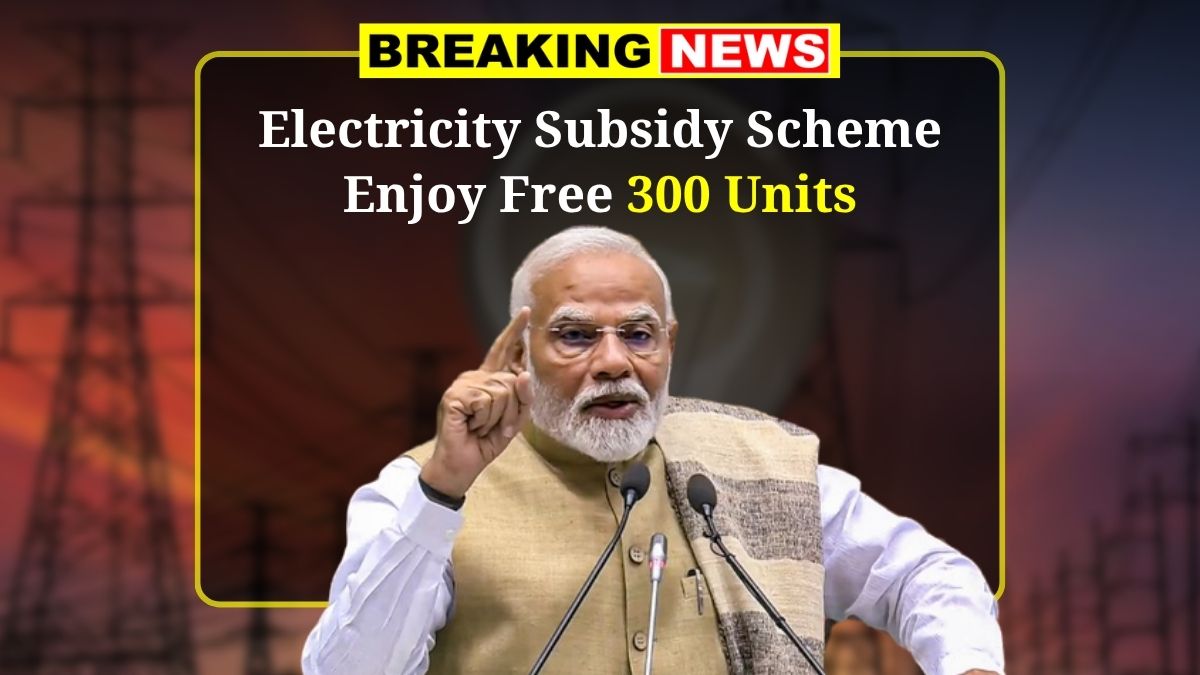Electricity Subsidy Scheme – Big changes are on the horizon for electricity users in India—especially for those who consume more than 300 units a month. The government has announced a revised electricity tariff policy that’s aimed at reshaping how subsidies are offered. If you’re someone who tends to have higher electricity usage, this update could affect your monthly expenses significantly.
What’s Changing with the Electricity Subsidy?
The central government is working on a new plan to revamp the existing electricity subsidy system. The main goal is to encourage people to be more mindful of their power usage while also reducing the overall financial burden on the state. Under this new approach, those who use up to 300 units of electricity per month will continue receiving subsidies as before. But once you cross that 300-unit mark, the rates will start to climb. This is designed to nudge households and businesses towards energy efficiency, while still protecting those who use electricity moderately.
How Will It Affect Your Monthly Bill?
The most noticeable impact will be on consumers who typically use more than 300 units in a billing cycle. For them, electricity bills are likely to increase, depending on their total usage. The revised policy introduces a tiered tariff structure that gradually reduces the percentage of subsidy as the number of units consumed increases. Eventually, users who consume more than 500 units will be paying the full cost of electricity without any subsidies.
For example, if your monthly usage falls in the 301–400 unit range, you’ll face a noticeable hike in your bill. And it gets steeper as your consumption increases. The idea here isn’t just to raise prices, but to make people think twice about wasteful energy habits and to promote greener living.
What Can You Do as a Consumer?
This policy shift is a good opportunity to take stock of your household’s energy habits. One of the smartest things you can do is monitor your electricity usage more closely. Try to stay within the subsidized range if possible. Investing in energy-efficient appliances, like LED lights, inverter-based air conditioners, and smart thermostats, can also help you cut down on unnecessary consumption.
It’s also a good idea to keep an eye on state-specific regulations. While the broader framework is being introduced at the national level, the actual rates and implementation details may vary from one state to another. Reaching out to your local electricity board can provide useful insights tailored to your area.
A Look at the New Tariff Setup
Here’s a rough idea of how the new tariff structure might look compared to the current one. Note that actual numbers could differ depending on your state.
Currently, the first 100 units are priced at ₹3.00, and the proposed new rate is ₹3.50—with a 50% subsidy still in place. As usage climbs, rates increase and subsidies drop. For example, from 101–200 units, you’ll pay ₹4.50 with a 30% subsidy. Once you hit 301–400 units, the rate jumps to ₹7.00 with only a 10% subsidy. And beyond 500 units, there will be no subsidy at all—you’ll be paying the full rate of ₹10.00 or more per unit. These numbers may seem small at first glance, but over a billing cycle, the difference adds up fast.
Why Is This Policy Being Introduced?
The government is trying to strike a balance between making electricity affordable and encouraging responsible usage. Blanket subsidies have become a heavy burden on public finances. At the same time, there’s growing concern about the environmental impact of unchecked energy consumption. The new tariff plan is part of a broader effort to promote energy conservation and to support India’s shift towards renewable power sources. By discouraging high usage through pricing, the policy hopes to make users more conscious about how much power they’re using and why.
Mixed Reactions from the Public
Reactions to the policy change have been mixed. On one hand, environmental advocates and economists are praising the move as a much-needed step toward sustainability. On the other, many consumer rights groups are concerned about the effect this could have on lower- and middle-income families who might not be able to cut back on usage easily.
Some industry experts point out that the key will be in how the policy is implemented—especially when it comes to supporting vulnerable consumers who might be pushed out of the subsidy range due to unavoidable electricity needs like medical equipment or larger households.
How to Get Ready
With the new policy coming into effect soon, it’s a good idea to start preparing now. Track your monthly consumption and look for patterns. Think about switching to solar energy if it’s viable in your area. Even small changes, like unplugging devices when not in use or using ceiling fans instead of ACs, can help lower your usage. Participating in local feedback sessions or community meetings can also keep you informed and give you a chance to share your concerns.
Disclaimer
The details provided here are based on proposed tariff changes and are meant for informational purposes only. Actual rates and implementation may vary by state and are subject to official notification from relevant electricity boards. Always consult with your local electricity provider for the most accurate and up-to-date information.





